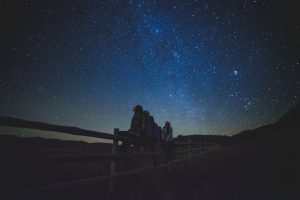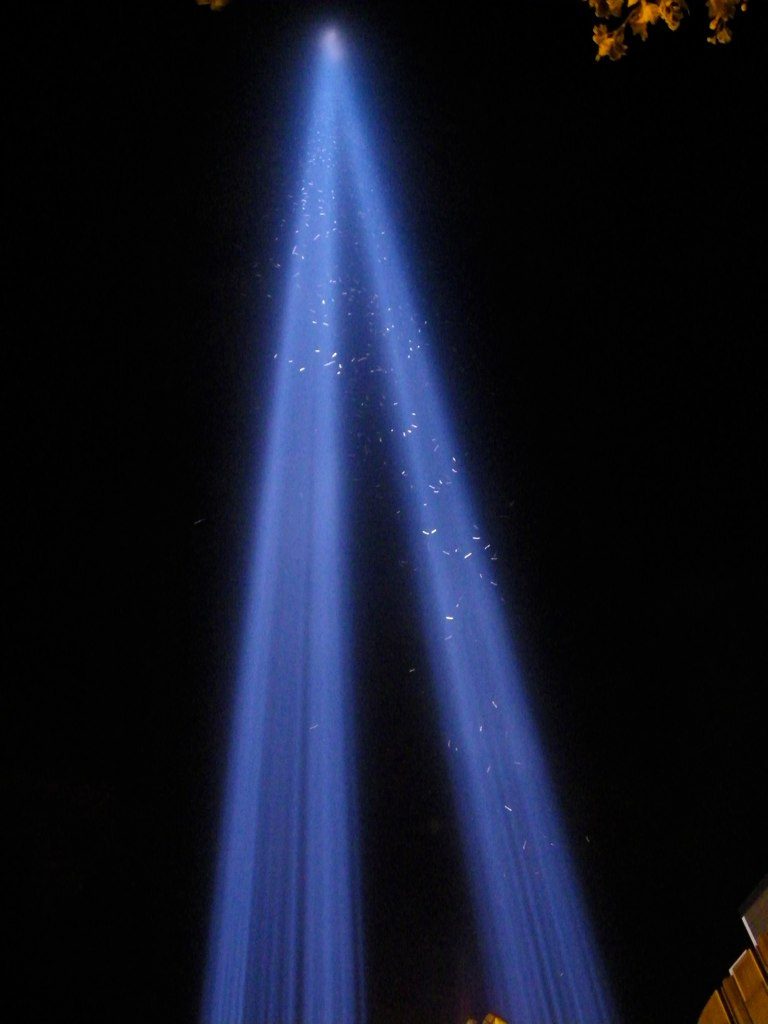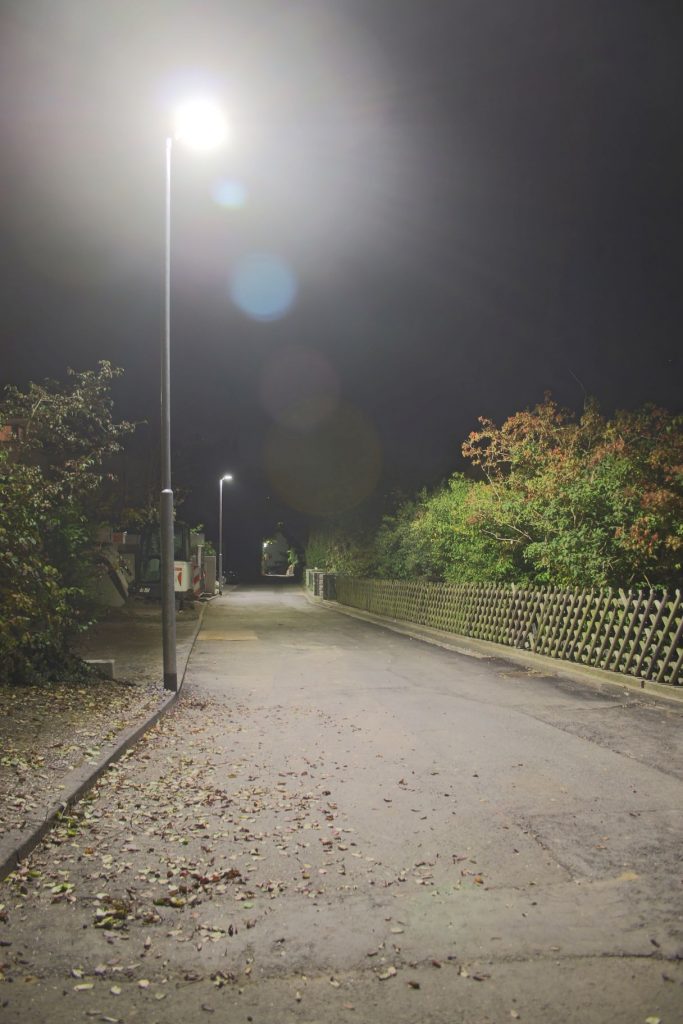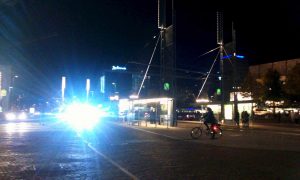Do we need to protect the night?
If we talk about protecting the the enviornemtn, these days we very much focus on climate change. Scientist have known since more than years that we have a problem. And so did politicians like Ronald Reagan and Margaret Thatcher. Seriously, we have a huge problem at our hands and we are running out of time.
If you do some reading on climate change and the environment, you will also discover quite easily that it is not the only environmental problem we have. We have loads of them. Plastic waste, toxic substances in the water, dying forests, mass extinction, there is a sheer endless list of troubles and it is growing. And now there are some people talking about light pollution. Seriously? How can light be a pollution? It’s healthy, it’s beautiful, it makes us feel good. But some people come along and demand regulations and curfews. Isn’t that over the top? Or do we need top protect the night?
Yes, we need to, and – to be honest – we want to do it. I will try to explain why this is the case and why protecting the night means improving the quality of our life.
Getting rid of the night

In the good old times things were easy. During the day, there was bright light, sometimes very bright light, up to 120.000 lux. At night, it was dark. The full moon shines with 0.3 lux at its best times, a clear, starry night has only 0.0006 lux. Too dark for you? Full moon is enough to see your surroundings and even recognise faces. The light of the Milky Way is strong enough to cast shadows, if there are no other light sources around that produce glare. To look into a star-filled night sky is an experience you should treat yourself to once in a while.
But let’s be honest, a cloudy night is really dark and even moonlight isn’t enough for reading or work. In cities, the natural night light doesn’t reach the ground. 300 years ago, it was so dark in Paris that a nightly walk frequently ended in the river Seine. For this reason, our ancestor invented artificial light and – Io and behold – we are not restricted to the solar day anymore, but can work at everytime we want. Carpe noctem, use the night and turn it into day!
This seemed to be a genius idea, but by now we know that there are a couple of drawbacks. The first to complain for nature-loving people who missed the view into the starry night sky. This loss was adressed in several pieces from the romantic period. The next group to speak up where the astronomers, who were forced to close down excellent observatories due to the skyglow of the neighbouring cities.
Okay, now we can say that the loss of the night sky is a cultural problem and doesn’t concern most people. It’s not essential for our survival and we can create new cultural items. To loose the natural night sky with all its stars is a bit like shredding the Mona Lisa or burning down Notre Dame. We can bear it.
Hold on – when Notre Dame burnt down, the Western world was in shock. Suddenly vast amounts of money were donated to rebuilt it. Why isn’t this happening for our night sky? Why don’t most people not even care? About one-third of humanity is not able to see the Milky Way from their home anymore, most of them citizens of Europe and Notthern America, and the numbers are growing. But you don’t miss what you have never seen.
Artificial light at nightcan harm the environment and human health

So light pollution is a cultural problem but it is much more. Resarchers all around the world find evidence on the ecological impacts of artificial light at night. It concerns almost all groups of organisms. Billions of insects die at lamps, birds crash into illuminated buildings, bats abandon their roosts, eels stop their migration, black birds sing in the middle of the night, moles miss their hibernation, freshly hatched see turtles can’t find their way into the ocean, clownsfish eggs don’t hatch, corals can’t have sex, trees keep their leaves too long. Just to list some examples.
To protect our environment, we need to reduce illumination at night. Well, there are situations, in which light does not influence that many animals. In winter, some argue, there are only few insects out and about, so christmas illumination isn’t an issue. But it uses energy. In 2009, the EU consumed 14% of it’s electric power for lighting. Worldwide, 1,900 million tons of CO2 were produced for illumination. If we talk about protecting our climate, this would be a project to tackle, wouldn’t it?
To reduce CO2-production, we often use solar-lights. You probably know them from the gardens. Those little lights don’t cost much, create pretty light spots, and go to the bin after about two years when their battery dies. Solar panels cannot be produced in an environmentally friendly way, so we can’t really label them as Green Energy. Even big solar panels and wind mills aren’t without environmental problems. So to become more sustainable, we need to reduce energy consumption, and reducing light at night is one way to go.

To reduce energy many communities switch to LEDs, especially neutral-white 4000 Kelvin LEDs, which have been seen as the “best” compromise between energy-efficient and comfort for the residents. More energy-efficient LEDs produce a colder, more glaring light. But even 4000 Kelvn is too much for many people, especially since right now something else is happening: Because LEDs need less energy, we use more light and everything gets brighter. Why not, since we still save energy and more light is better for the people, isn’t it?
Wrong. The brighter our cities get, the more people suffer. It starts with aesthetical reasons. Many people aren’t happy when the romantic old town centre is suddenly bathed in cold, bluish-white light. This has happened in Rome and it didn’t go too well. But for many people there is more at stake: their health. Bright, glaring light can impair the vision and cause headache and nausea. It can result in sleep disorders, because it is a distraction that make getting to sleep much harder. A study from Korea showed that the brighter an area is, the more people need sleep medication. There are also several studies showing a correlation between a slightly brighter bedroom and depression, cardiac diseases and obesity. If you can’t get enough sleep, your immune response weakens, even your defense against cancer is lower. Reasons enough to sleep in natural darkness.
We have to be realistic here, outdoor light pollution isn’t our biggest problem when it comes to light and health. Indoor light, especially from smart phones, tablets, and e-readers have a much higher influence and can supress the production of melatonin, the hormon that controls or body clock and thus our sleep. Outdoor lights, however, are an additional stressor which we can’t control ourselves.
Is more light more safety?
But don’t we need outdoor lights? Haven’t I said that without street lights, walking through a city can be dangerous? It’s correct, we can’t live interly without light (yet). But we use much more light than we need – and we often use it in the wrong way. Street lights, for example, are focussed on the area were cars drive, not on the sideways. For this reason, drivers often see a crossing pedestrian way too late. It would be much better to illuminate in a more uniform way, but this is only possible with lower intensities.

Another danger is glare, often produced by brightly lit fuel stations, advertisement boards, and shop windows. This often results in light chaos. No chance for a car driver to see an obstacle in time! Bright light can effectively blind us for several seconds without us realising it. Therefore in Austria, advertisement boards need to have a permit, while in most countries, there are no limits to the amount of light someone spills on the road. Which is bad, glare is a security risk and reduced illumination could result in safer traffic.
Light can also give you a hard time with your neighbours. Thanks to modern LEDs it’s affordable to put your house in a scene of light. That can look really good – or it can spoil your neighbour’s evening. Okay, there is the option to use blinds, but this reduces the air flow into the bedroom. What’s more important? A light installation or a well-aired sleeping room? And what about the right to sit on your veranda without being hit by other people’s spotlights?
But what about break-ins? Doesn’t police say that we should illuminate our property for safety reasons? First, it might be interesting to know that in most western countries the majority of break-ins happen during day-time. No burglar wants to meet the resident, and at night they are usually at home. Those who come at night find lights actually quite helpful to check out the house from some distance and get around on the property. It raises much more suspicion to use a torch that might be spotted by the neighbours. If you want to protect your house, get sturdy windows and doors, and invest in an alarm system. Changing indoor lights can help, because they look like somebody’s at home. You can also use motion detectors, but they loose their efficiency if they are triggered by every passing cat. Also, make sure that they don’t illuminate yours neighbours property or the street.
By the way, there are several studies on light and crime, and they don’t give a clear picture. In some cases crime was reduced after lights had been changed, in more cases residents felt safer, although the crime rate hadn’t changed. In most cases nothing happened, in some cases crime even increased. Very bright light can even make people feel anxious, some complained that they felt like in prison after 4000 K LEDs had been installed. It appears that the way to more safety does not so much mean more light, but better light.
So, instead of more light we need better light that only illuminates what needs to be illuminated. Currently, street lights waste about one third of the light by pointing it onto facades or straight into the sky. Shielded luminaires direct the light onto the street, reduce glare and save energy. The same is true for private light. Bright lights produce contrast which make it harder for our eyes to adapt. We actually see better in dimmer, uniform illumination. The colder the light, the higher the colour temperature, the more glare it produces. By now, we have well-designed, energy-efficient street lights with 2,700 K, 2,200 K and even 1,800 K (so-called Amber LEDs).
Less light pollution helps with many problems
So far, light pollution hasn’t received much attention, but it should. Compared to other environmental problems, it could be solved quite easily, often by simply turning a switch. Additionally, if we reduce light pollution, this would’t have some environmental side-effects:
- Climate: Less light at night saves energy and reduces CO2-production.
- Insects: The most efficient pollinators are nocturnal insects who currently die in billions at lamp posts. Also, insects are important for all food webs – without them, all ecosystems will break apart.
- Birds: Millions of birds crash into illuminated structures, especially during migration.
- Extinction: Many threatened species need darkness for foraging, reproduction, or simply sleep.
- Health: Natural darkness is the best way for relaxing sleep and neccessary for health, productivity, and quality of life.
- Safety: Well-designed light-concepts improve orientation at night and relieves our senses, so we can focus on the reall important things in traffic.
- Culture: Few things have influenced human culture like the starry sky. It’s the place for dreams, visions, and hopes – and the fundament for time calculations and navigations.